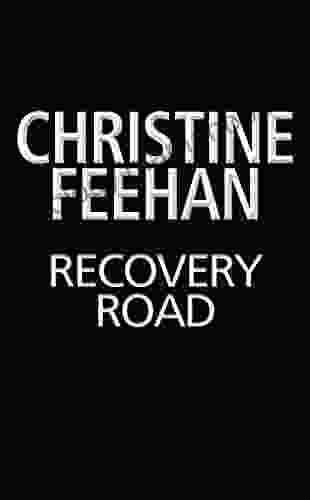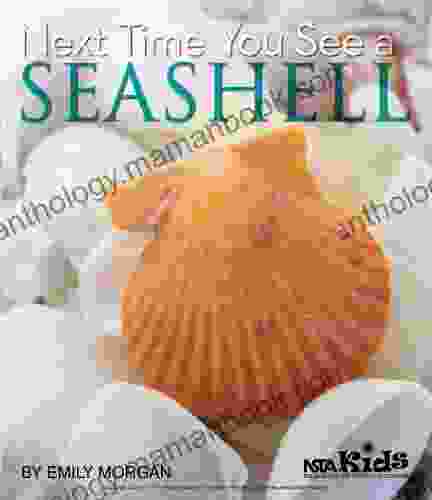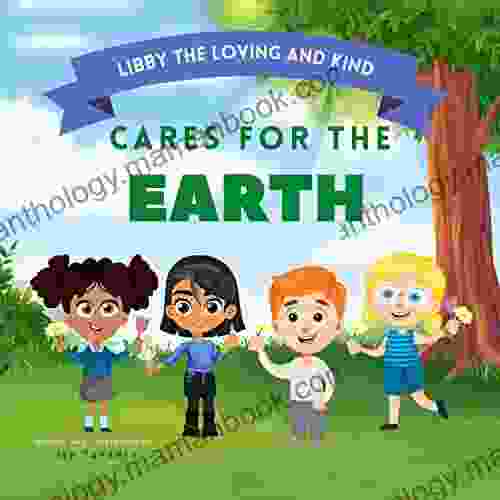The Next Time You See a Seashell: A Journey of Discovery and Wonder

Seashells are beautiful and fascinating objects that can be found on beaches all over the world. But what do you really know about them? In this article, we will take a closer look at seashells, including their formation, structure, and diversity. We will also explore the different ways that seashells have been used by humans throughout history. So next time you see a seashell, take a moment to appreciate its beauty and wonder.
4.5 out of 5
| Language | : | English |
| Paperback | : | 30 pages |
| Item Weight | : | 3.52 ounces |
| Dimensions | : | 8.5 x 0.07 x 11 inches |
| File size | : | 5703 KB |
| Text-to-Speech | : | Enabled |
| Screen Reader | : | Supported |
| Enhanced typesetting | : | Enabled |
| Word Wise | : | Enabled |
| Print length | : | 32 pages |
| Lending | : | Enabled |
How Seashells Are Formed
Seashells are the hard, protective outer coverings of marine mollusks. Mollusks are invertebrates that have soft bodies and no backbones. They include animals such as snails, clams, oysters, and octopuses. Seashells are made of calcium carbonate, which is a mineral that is found in seawater. The calcium carbonate is secreted by the mantle, which is a thin layer of tissue that covers the mollusk's body. The mantle secretes the calcium carbonate in layers, which build up to form the shell.
The shape of a seashell is determined by the shape of the mollusk's body. The size of the shell is determined by the age of the mollusk. As the mollusk grows, it secretes more calcium carbonate and the shell grows larger. The color of a seashell is determined by the type of pigment that is secreted by the mantle. Some seashells are white, while others are brown, black, red, or green. The color of a seashell can also change over time as the mollusk grows and the shell is exposed to sunlight and other environmental factors.
The Structure of Seashells
Seashells are made up of three layers: the outer layer, the middle layer, and the inner layer. The outer layer is made of aragonite, which is a type of calcium carbonate. The middle layer is made of calcite, which is another type of calcium carbonate. The inner layer is made of conchiolin, which is a protein. The outer layer is the hardest and most durable layer of the shell. The middle layer is the thickest layer of the shell. The inner layer is the softest and most flexible layer of the shell.
The outer layer of the shell is covered in a thin layer of periostracum. The periostracum is made of a protein called conchiolin. The periostracum protects the shell from damage and erosion. The periostracum is also responsible for the color of the shell. The middle layer of the shell is made up of aragonite crystals. The aragonite crystals are arranged in a regular pattern. The regular pattern of the aragonite crystals gives the shell its strength and durability. The inner layer of the shell is made up of conchiolin. The conchiolin is a flexible protein that allows the shell to grow and change shape.
The Diversity of Seashells
There are over 100,000 different species of mollusks in the world. Each species of mollusk has its own unique type of seashell. Seashells come in a wide variety of shapes, sizes, and colors. Some seashells are small and delicate, while others are large and heavy. Some seashells are smooth and shiny, while others are rough and textured. Some seashells are white, while others are brown, black, red, or green.
The diversity of seashells is due to the diversity of mollusks. Mollusks live in a wide variety of habitats, from the shallow waters of the tropics to the deep waters of the ocean. Each habitat has its own unique set of environmental conditions. The environmental conditions of a habitat can affect the shape, size, and color of a seashell.
The Uses of Seashells
Seashells have been used by humans for thousands of years. Seashells have been used for a variety of purposes, including jewelry, currency, tools, and building materials. Seashells have also been used for decorative purposes. Seashells can be used to make jewelry, such as necklaces, bracelets, and earrings. Seashells can also be used to make currency. In some cultures, seashells were used as money. Seashells can also be used to make tools. Seashells can be used to make knives, scrapers, and other tools. Seashells can also be used as building materials. Seashells can be used to make houses, temples, and other structures. Seashells can also be used for decorative purposes. Seashells can be used to decorate homes, gardens, and other spaces.
Seashells are beautiful and fascinating objects that can be found on beaches all over the world. Seashells are formed by marine mollusks and are made of calcium carbonate. Seashells come in a wide variety of shapes, sizes, and colors. Seashells have been used by humans for thousands of years for a variety of purposes. So next time you see a seashell, take a moment to appreciate its beauty and wonder.
4.5 out of 5
| Language | : | English |
| Paperback | : | 30 pages |
| Item Weight | : | 3.52 ounces |
| Dimensions | : | 8.5 x 0.07 x 11 inches |
| File size | : | 5703 KB |
| Text-to-Speech | : | Enabled |
| Screen Reader | : | Supported |
| Enhanced typesetting | : | Enabled |
| Word Wise | : | Enabled |
| Print length | : | 32 pages |
| Lending | : | Enabled |
Do you want to contribute by writing guest posts on this blog?
Please contact us and send us a resume of previous articles that you have written.
 Top Book
Top Book Novel
Novel Fiction
Fiction Nonfiction
Nonfiction Literature
Literature Paperback
Paperback Hardcover
Hardcover E-book
E-book Audiobook
Audiobook Bestseller
Bestseller Classic
Classic Mystery
Mystery Thriller
Thriller Romance
Romance Fantasy
Fantasy Science Fiction
Science Fiction Biography
Biography Memoir
Memoir Autobiography
Autobiography Poetry
Poetry Drama
Drama Historical Fiction
Historical Fiction Self-help
Self-help Young Adult
Young Adult Childrens Books
Childrens Books Graphic Novel
Graphic Novel Anthology
Anthology Series
Series Encyclopedia
Encyclopedia Reference
Reference Guidebook
Guidebook Textbook
Textbook Workbook
Workbook Journal
Journal Diary
Diary Manuscript
Manuscript Folio
Folio Pulp Fiction
Pulp Fiction Short Stories
Short Stories Fairy Tales
Fairy Tales Fables
Fables Mythology
Mythology Philosophy
Philosophy Religion
Religion Spirituality
Spirituality Essays
Essays Critique
Critique Commentary
Commentary Glossary
Glossary Bibliography
Bibliography Index
Index Table of Contents
Table of Contents Preface
Preface Introduction
Introduction Foreword
Foreword Afterword
Afterword Appendices
Appendices Annotations
Annotations Footnotes
Footnotes Epilogue
Epilogue Prologue
Prologue J M Farkas
J M Farkas Skottie Young
Skottie Young Maggie Marr
Maggie Marr Mas Tellocin Eniatnof
Mas Tellocin Eniatnof J Hawki
J Hawki Gilbert G Gonzalez
Gilbert G Gonzalez Neil Wood
Neil Wood The Edward Clown Family
The Edward Clown Family Fiona Grace
Fiona Grace L Frank Baum
L Frank Baum Maia Kobabe
Maia Kobabe Valentina Quarta
Valentina Quarta Edgar Allan Poe
Edgar Allan Poe Daniele Mencarelli
Daniele Mencarelli Don Nardo
Don Nardo Mike Duncan
Mike Duncan Guy W Jones
Guy W Jones Benedikt Wisniewski
Benedikt Wisniewski Pte90 Academy
Pte90 Academy Erin R Flynn
Erin R Flynn
Light bulbAdvertise smarter! Our strategic ad space ensures maximum exposure. Reserve your spot today!
 Thomas PynchonFollow ·13.4k
Thomas PynchonFollow ·13.4k Juan RulfoFollow ·8.4k
Juan RulfoFollow ·8.4k Davion PowellFollow ·3.1k
Davion PowellFollow ·3.1k Elias MitchellFollow ·5.2k
Elias MitchellFollow ·5.2k Jim CoxFollow ·10.3k
Jim CoxFollow ·10.3k Dwight BellFollow ·17.3k
Dwight BellFollow ·17.3k Tim ReedFollow ·18k
Tim ReedFollow ·18k Duane KellyFollow ·18.4k
Duane KellyFollow ·18.4k

 Vernon Blair
Vernon BlairThe Woman I Met in My Dream: An Unforgettable Night of...
As the veil of night...

 Carlos Fuentes
Carlos FuentesThe Ultimate Guide to Healthy Eating for Toddlers: Meal...
As a parent of a...

 Peter Carter
Peter CarterInside My Autistic Mind: A Journey of Self-Discovery and...
Autism spectrum disorder (ASD) is a...

 Isaac Asimov
Isaac AsimovA Journey Through Jane Austen's Literary Masterpieces:...
Jane Austen, the renowned English...

 Hank Mitchell
Hank MitchellAdvancements in Textiles: Science and Technology by...
The textile...

 Troy Simmons
Troy SimmonsRecovery Road: An Odyssey of Hope and Redemption by...
Recovery Road is a...
4.5 out of 5
| Language | : | English |
| Paperback | : | 30 pages |
| Item Weight | : | 3.52 ounces |
| Dimensions | : | 8.5 x 0.07 x 11 inches |
| File size | : | 5703 KB |
| Text-to-Speech | : | Enabled |
| Screen Reader | : | Supported |
| Enhanced typesetting | : | Enabled |
| Word Wise | : | Enabled |
| Print length | : | 32 pages |
| Lending | : | Enabled |












